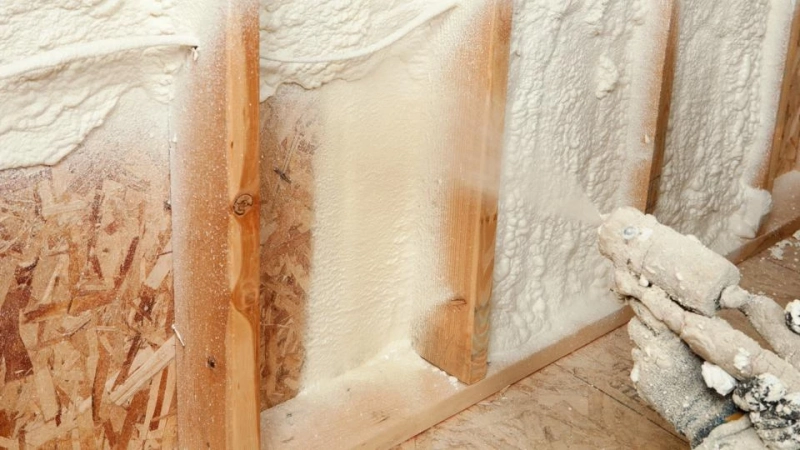The roof space, or roof cavity, is a top contributor to heat loss in your home. If you feel that the material in your attic has been compromised, you should consider investing your time and money in roof insulation removal.
How effective is this removal process? Why is it beneficial to replace old, inefficient insulation with newer, more modern materials?
Why is roof insulation removal in Melbourne so critical?
In an uninsulated house, heat escapes at a rate of 25% via the roof. Saving money on heating costs may be as simple as insulating your home\'s loft, attic, or flat roof. Roof insulation has a 40-year lifespan and may easily recoup its initial investment with proper installation.
Australia has many older homes that need their insulation upgraded. The insulation used in today\'s homes is superior in many ways. Whether it\'s spray foam, loose-fill, or rigid boards, modern insulation is a huge improvement over everything that came before.
What can lead to roof insulation removal?
One of the main advantages of using a quality product to insulate your house is increased energy efficiency. You may significantly reduce the cost of heating and cooling by adding this extra layer of protection.
Ineffective insulation may be caused by the following common causes:
1. Damp lofts
Insulation prevents warm air from exiting a building. As a result, your attic\'s temperature will drop. And this might lead to or exacerbate issues with moisture and condensation. Increasing ventilation may be necessary if you want to do the work of removing and replacing roof insulation on your own.
If there is a dampness issue, you should consult a specialist before adding insulation.
2. Inadequate ventilation
The circulation of air within your home is essential to maintaining its cleanliness, hygiene, and safety. Skilled insulation installers make a point of avoiding obstructing or sealing any deliberate ventilation. DIY insulators should be wary of blocking any air intakes, whether they are vents, grilles, or air bricks.
Roof insulation installation must adhere to strict ventilation requirements mandated by all Australian building codes. If there aren\'t enough vents, this typically entails adding some.
To find out what is required of your house, contact your local building control department.
3. Unreachable attic area
If your attic is difficult to reach, you can have blown-in insulation installed by a specialist. Experts can utilise specialised blowing equipment to insulate even the most inaccessible areas.
They might employ polyurethane foam, treated cellulose, mineral wool batting, or any other type of home insulation. They will have the old insulation vacuumed as the very first step.
4. Flat roofs
Insulating a flat roof from above is the prefered method. Rigid insulation may be installed over the waterproofing or straight onto the wood surface of the roof.
On top of the insulation, you need to install a whole new weatherproofing layer. This should ideally be done whenever the roof covering is due for replacement.
Flat roof insulation is now a requirement of building codes. Therefore, if you were planning on replacing your roof anyway, you should do so. A flat roof may be insulated from the underside. Condensation issues, however, may arise if this is not done properly.
DIY roof insulation removal
You could potentially insulate your attic on your own if it is easily accessible, free of moisture issues, and not a flat roof.
Is there a need for a more sophisticated insulation system, or is there a dampness issue? Then a professional installer should be used for removing insulation and reinstallation.
Insulating a flat roof is a job best left to the pros. Before any work can be done on a damp roof, a professional inspection is required. You can get all this done today at a competitive price.
When DIY insulation removal gets complex
As explained, insulation removal Melbourne can be performed by homeowners in uncomplicated scenarios. Yet, the addition of pipes, water tanks, and attic access hatches may be a nightmare for homeowners.
Adding insulation between the joists will help to insulate the living area below, but will have the opposite effect on the attic space above. This might increase the likelihood of frozen pipes and water storage tanks in the attic. Thus, insulation is a must. You may also want a walking surface if your water tank is some distance from the loft entrance.
Because of the lower temperature in your attic\'s insulated space, you may experience draughts while opening the loft hatch. You may avoid this by installing an insulated loft hatch and sealing its perimeter with draught excluder strips.
Choosing roof insulation
Insulation removal, including replacement, requires a good selection of new insulating materials. And this is where insulation installation services come in handy for you.
The efficiency with which old roof insulation is removed is also dependent on the quality of the replacement insulation installed. There is no use in removing old insulation if you have no idea what kind of insulation should be installed in its place.
For the best results, hire professional insulation removal services in your local area. Consider how useful their assistance would be in this situation:
Mice in your attic
It\'s simple to tell whether mice are causing problems in your house. Look for droppings and gnaw marks throughout your pantry and refrigerator. Unless you plan on spending a significant amount of time up there, you probably don\'t want to deal with an attic mouse infestation.
The spread of mice to other parts of your house may be the first sign that you have an infestation. There are a few telltale indicators that mice have made your attic their home. The infestation has to be eliminated immediately, even if it\'s just in the attic. Why?
Mice may spread disease and spoil food by exploring new parts of your home. Their droppings may cause illness throughout your house, even if they are confined to the attic.





